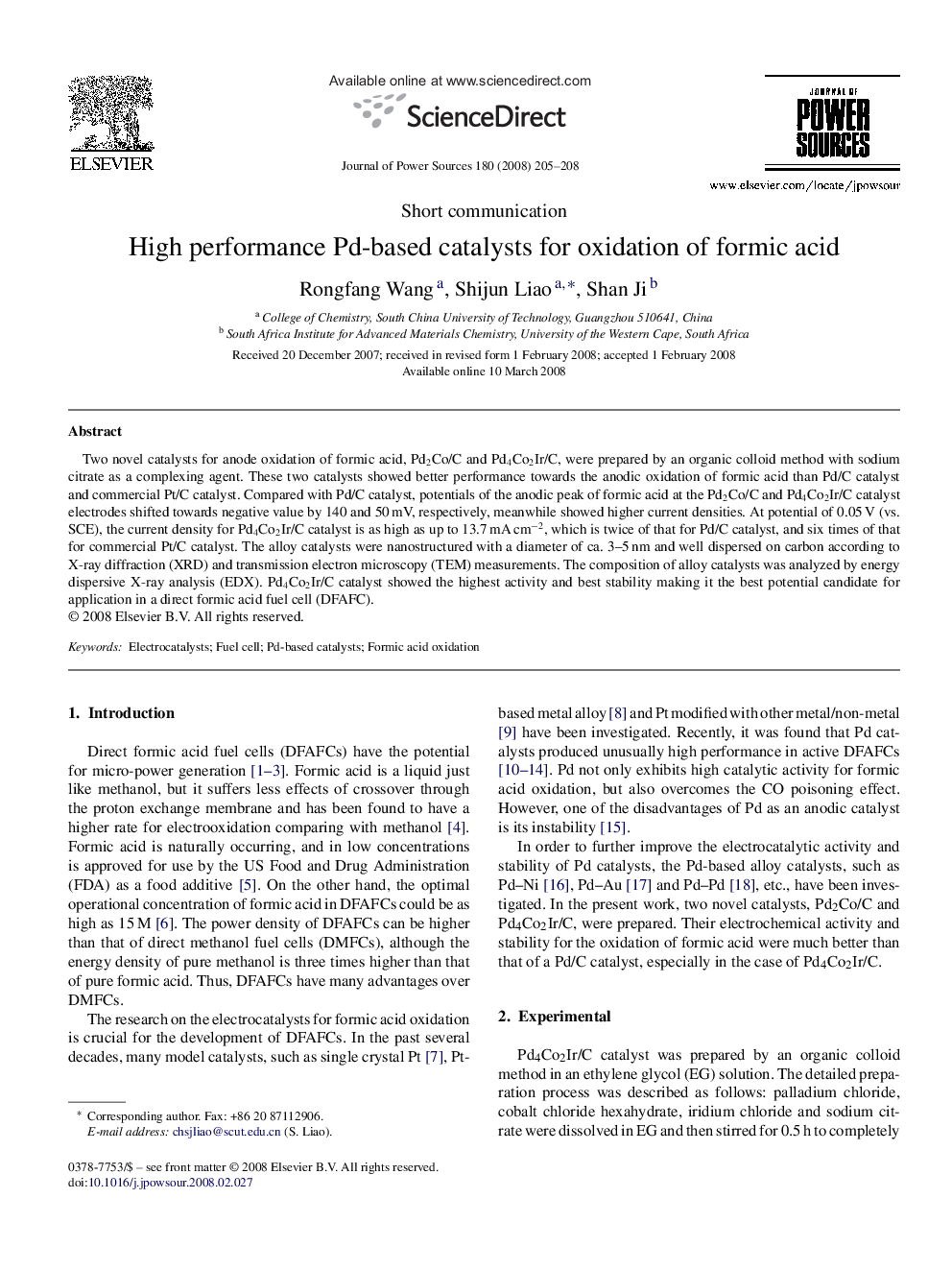| Article ID | Journal | Published Year | Pages | File Type |
|---|---|---|---|---|
| 1290564 | Journal of Power Sources | 2008 | 4 Pages |
Two novel catalysts for anode oxidation of formic acid, Pd2Co/C and Pd4Co2Ir/C, were prepared by an organic colloid method with sodium citrate as a complexing agent. These two catalysts showed better performance towards the anodic oxidation of formic acid than Pd/C catalyst and commercial Pt/C catalyst. Compared with Pd/C catalyst, potentials of the anodic peak of formic acid at the Pd2Co/C and Pd4Co2Ir/C catalyst electrodes shifted towards negative value by 140 and 50 mV, respectively, meanwhile showed higher current densities. At potential of 0.05 V (vs. SCE), the current density for Pd4Co2Ir/C catalyst is as high as up to 13.7 mA cm−2, which is twice of that for Pd/C catalyst, and six times of that for commercial Pt/C catalyst. The alloy catalysts were nanostructured with a diameter of ca. 3–5 nm and well dispersed on carbon according to X-ray diffraction (XRD) and transmission electron microscopy (TEM) measurements. The composition of alloy catalysts was analyzed by energy dispersive X-ray analysis (EDX). Pd4Co2Ir/C catalyst showed the highest activity and best stability making it the best potential candidate for application in a direct formic acid fuel cell (DFAFC).
